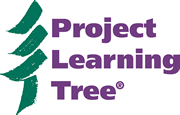Whether you’ve used all 14 activities up to this point or selected those most appropriate for your class, students are likely to need additional time to make connections between these concepts and reflect on how this information can be used. In addition, many students are most interested in what they can do, now, to affect the issue of climate change. Through a group puzzle activity, exploration of graphs of carbon pools, class discussions, group reports and presentations, and the development and implementation of an action project, the three activities in this section assist your students in linking concepts of carbon sequestration and forest management (Activity 12), apply what they have learned to local forests (Activity 13), and consider ways to take action (Activity 14).
Key Concepts in Section 5
- The impact on atmospheric carbon of substituting a less carbon-intensive product includes the carbon savings accrued by not using the more carbon-intensive product. Distinguishing between similar products requires that students know which product requires less fossil fuel to produce or use, avoids generating carbon dioxide, and can be recycled to reduce carbon emissions.
- Many strategies can be used to enhance forests, mitigate climate change, and adapt to future climate changes. Each of these strategies can be important and appropriate by themselves; they may be more effective when implemented together.
- While there may be many details that people disagree on, they are likely to agree that forests are important to their communities. Maintaining healthy forests is a good goal, and many people can work together to do so.
- Students can make a difference by being leaders in creating positive change within their communities.
download the Section 5 Overview.

